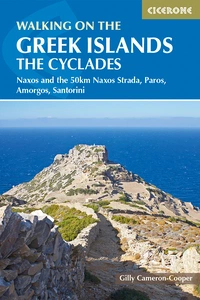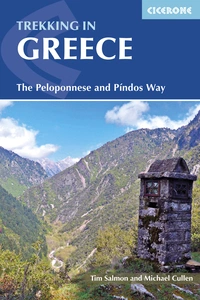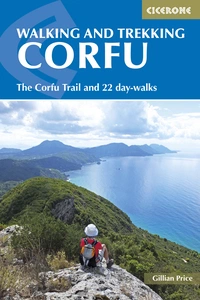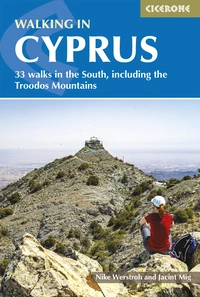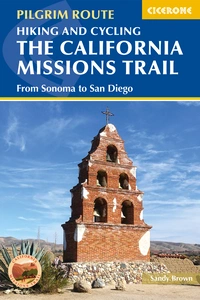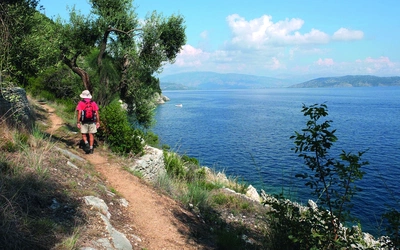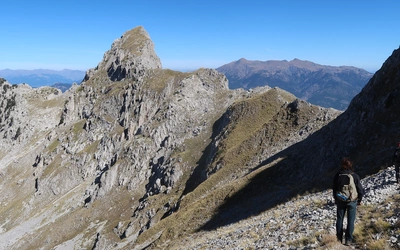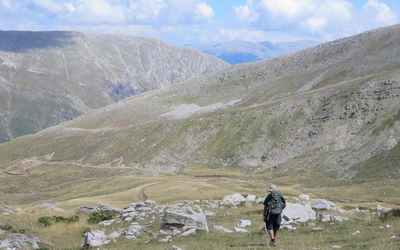Hiking on Greece's Cycladic islands
Cicerone author and walking guide Gilly Cameron-Cooper has watched Greece's Cycladic islands emerge as a charming but challenging hiking destination
In the small hours of 20 March 2003, my husband Robin and I left our high-pressure London life for a Greek island, where we planned to turn our hiking hobby into a lifestyle business.
Our two-person company, Walking Plus, was to operate hiking holidays in the Cycladic archipelago in the Aegean Sea for the next 16 years, initially on Naxos, and later on the neighbouring islands of Paros, Tinos and Amorgos.
We sold the company a couple of years ago, and to create something lasting of the research and hundreds of kilometres of routes I plotted, tramped and recorded over the years, I wrote Walking on the Greek Islands for Cicerone.
We had chosen Greece because we already had a foothold in the Greek culture, language and contacts from when we’d lived and worked in Athens several years earlier, and had discovered the magic of walking in rural Greece with Michael Cullen, co-author of Cicerone’s Trekking in Greece.

Island hopping, not hiking
The Walking Plus story ran parallel with the painstaking development of walking and other activity tourism on the Greek islands. When we started, the Cycladic islands weren’t on the hiker’s radar; they were for summer holiday sun and swimming; for hopping, not hiking.

The potential to use the island interiors for the burgeoning outdoor activity market and the long-term value of alternative tourism that extended beyond August hadn't been realised. As soon as the summer tourists left, tavernas, non-essential shops, museums and archaeological sites closed, and the Greeks wished each other Kalo Xheimona (Happy Winter).
One of the most tantalising aspects for walkers, of many of the Cycladic islands, are the networks of working paths, the old lines of communication for man and mule. Often cut from and paved with local rock – marble or schist, or on Santorini with red and black volcanic lava – they straddle granite tours, zig-zag like collapsible rulers up (and down) limestone crags, and wind into deeply incised wooded valleys to tiny cut-out bays.
They thread from coast to interior, link remote settlements and outlying vineyards, olive groves and meadows. Some are dubbed Byzantine ways, but others roll back much further in time to the scattered settlements of the Bronze Age. With the coming of motorised transport and roads (on Amorgos the main, and only, metalled road between the two ports was laid in the 1980s), many of old byways became redundant, neglected, broken and blocked. Others were erased by bulldozer for European Union-funded, tractor-width dirt-tracks.


Naxos
Naxos was our first base as it’s the biggest island in the Cycladic archipelago, with endless potential for exploring on foot. Everything that’s best about Greece is condensed into one accessible island; the full range of coastal, rural and mountain scenery is set in an ever-circling sea, with remnants of ancient and Classical history lying in the open countryside.

Our first guided group paid half price for the privilege of being guinea pigs. We had three weeks before they arrived to make sure around 50km of routes were passable. Every year, winter wind and rains turn the old paths and village alleys into storm drains, transporting uprooted vegetation, rocks and rubbish.
We hacked through skin-defoliating scrub and hanging curtains of brambles, and carved detours around sections of monopati (single track footpath) that had been buried beneath avalanches of earth bank and terrace wall. It used to be part of the annual rhythm of village life for the men and boys to go out to fix the local paths and terraces.
This stopped once villages came under the financial and administrative control of local government and areas of responsibility became confused. A farmer told us that the four machines on the island that could repair fallen paths were all in Naxos town, 90 minutes’ drive away and unlikely to be sent.
Over the next decade or so, sigha, sigha (slowly, slowly), the islands began to tap into the activity holiday market. Early sustainable tourism initiatives by local authorities and environmental groups proliferated but lacked synergasia (a good Greek word for working together). We offered to help as we knew the land, had re-discovered and opened lost paths, had researched the history and had useful marketing skills, but were rejected. 'It has to be a Greek who does these things,' said the council official.

Numbered walking routes

European Union funds were spent on information boards with no useful information and maps with no indication of scale, location or orientation. You see them still, battered and pockmarked from being used for shotgun target practice. Others announced the existence of nearby historical monuments but there were no clues on how to get to them, and they were invariably closed anyway.
Now there are numbered walking routes all over many of the islands, marked with plaques (not always consistently), published on Anavasi maps, and many are passable and maintained.
This has been largely down to the efforts of one man, Tassos Anastasiou, who qualified as a lawyer, but devoted his working life to ‘the rescue and promotion of the Cycladic culture and landscape’.
Hired by the Prefecture of the Southern Cyclades (a sort of county council), he traipsed over several Cycladic islands finding the lost paths and reporting back on their condition. But with so many islands to cover, and patchy support, back-up labour and equipment from the local authorities (who in their turn, were strapped by lack of cash, time and other priorities), his was a Sysyphean task. On Santorini, for example, many smart new (and useful) map boards, signposts and waymarks were removed by farmers.

Despite the progress, the hikers of today experience a sense of adventure, of (literally, in some cases) breaking new ground. You still need a guide book for when the waymarks run out, when a path marked by a dotted line on the map is not there, and of course to fill in titbits of interesting information on what you see on the way. As self-guided Walking Plus customer Ruth Giles from Vancouver, commented: 'We had a marvellous adventure on Naxos, it exceeded all our expectations. We usually create our own self-guided holidays, but we couldn’t have done this without such good directions; it would be very difficult. We had good boots and needed them.' And as Cicerone publisher Jonathan Williams points out: 'The challenges are all part of the charm of rural Greece.'
The next step
By 2006, Walking Plus was listed in the top 10 Greek Activity Holidays in the Sunday Times and Sunday Telegraph travel sections. Blue Peter icon Valerie Singleton came on a week’s holiday and wrote a full-page feature in the Daily Mail. The Irish Times quoted a customer saying: 'Naxos is like Connemara with sun.'

The International Herald Tribune in Athens summed everything up: 'Walking Plus shows what enthusiasm, hard work and organisation can do with a great concept in a virtually virgin market'.
We ditched (with relief) the annual brochure production and mailing in favour of internet and social media marketing, and self-guided walking took over from guided groups. We booked accommodation, transported bags across the island for a steady stream of independent walkers.
A time to go
We ran Walking Plus holidays in spring and autumn, as the islands are too hot, too crowded and too expensive in high summer, and nature goes into aestivation. From February to the end of May, September to early November, the countryside is full of life and interest to saturate the senses.
'The riot of colour, scent and form which bursts from the landscapes of the eastern Mediterranean islands each spring is something that everyone with any interest in flowers should experience,' said Fred Rumsey, a plant diversity expert from London’s Natural History Museum. 'Islands are special places for wildlife; because they are isolated unique organisms evolve on them, and they provide safe refuges for ancient lineages lost elsewhere.'
In the shoulder seasons, you take your chances with the weather. That unswerving, hot blue of summer most associate with Greece is June to September. In spring and autumn, stair-rod rain can turn mountain paths and alleys into cascades and storm drains, and there’s nowt so chilly as a deserted Greek mountain village with a north-east wind whipping through. But the Cyclades have many more sunny days than northern Europe, when the light, sparkle and temperature are tactile, energising and beautiful.
Off-season explorers may not be able to peep inside a country chapel to see the rare frescoes for which Naxos is famous, or the relics of a saint’s finger in a mountain-top monastery. Instead, they might stumble upon the traditional dancing, processions and free vegetable soup in a village celebrating Carnivale on the first day of Lent, the flowers and drama of Easter processions, or an impromptu party gathered round a family raki distilling.
Our self-guided guests walked from village to village, where it was often a challenge to find somewhere for them to stay. Today, Airbnb has transformed availability and choice. Several hotels in and around the main port and town now open in early April to the end of October and offer a transfer service to and from trail-heads for hiking guests. This is very handy, as island bus services can be few and far between, operating at the convenience of locals, not holiday hikers.
The Potamia villages of Naxos, steep-stacked on the mountain-side above a verdant valley, with water running through them, are the hub of many wonderful trails through a land littered with archaeological remains. But there’s only one bus to the starting point, from May onwards, at 1.30pm. If you make up a group of five, you can now book a minibus.
Off the well-beaten tracks
We would often guide an entire week’s walking and not see a soul, even in the distant villages. Apart from bucket-list hotspots such as the caldera rim of Santorini, or Mount Zas on Naxos, the highest peak of the Cyclades, and easily accessible archaeological sites, you can still have the land to yourself. All you’ll hear is the mew of a birds of prey circling above limestone crags, the hum and saw of insects, a thousand goats, heard but not seen, the call of a goatherd to his flock echoing over the mountains.
The islanders are generally warm and hospitable and it is, for example, safe and acceptable to hitch-hike – well it was pre-pandemic. Don’t expect help with directions, though, even if you can understand the language. The concept of leisure walking is alien to many a Greek; some rural villagers now only remember the old paths close by, so show you the way to the nearest road.
The other islands
By 2010, Walking Plus was operating on three other islands, with the help of local route managers (although we still had to do our six-week plotting and research). Charlie Merlin, on Tinos, had fought many battles opening up and saving the remarkable network of working paths from destruction. Amorgos, remote, insular and sensual, with the most potent aromatic shrubs in Greece, was under the management of Panos Psychogios. Paros, with its twisted and contoured metamorphic rock formations, and monastic oases of calm hidden in folds of deep countryside.
We didn’t operate Walking Plus on Santorini, because it is too small for more than a few days’ walking, but does have sensational volcanic scenery, and an international airport, so is a good launching pad for the other islands. Away from the crowds at caldera viewpoints and excavated ancient cities, you discover a secret Santorini on foot, where troglodytic caves are carved into soft volcanic ash cliffs, man and mule till rare pockets of soil, and wreath-shaped vines grow in fields of pumice stone.

Walking on the Greek Islandsand all who follow the trails in it, will ensure that these Cycladic islands will be part of the international hiker’s calendar, and that the progress made for the island environment and the restoration of the old paths will not be lost.
A Greek government spokesman recently announced that it is vital for Greeks providing tourist services to extend the season into this autumn and to plan ahead for next spring, in order to cushion the large losses that are expected this summer as a result of Covid restrictions.
Off-season hikers should be welcome guests then, even those from the UK, once travel restrictions are lifted. Now is the time to plan your post-lockdown escape with the help of a Cicerone guide. Naturally social-distancing independent walking on Greek islands sounds like a pretty attractive proposition.

